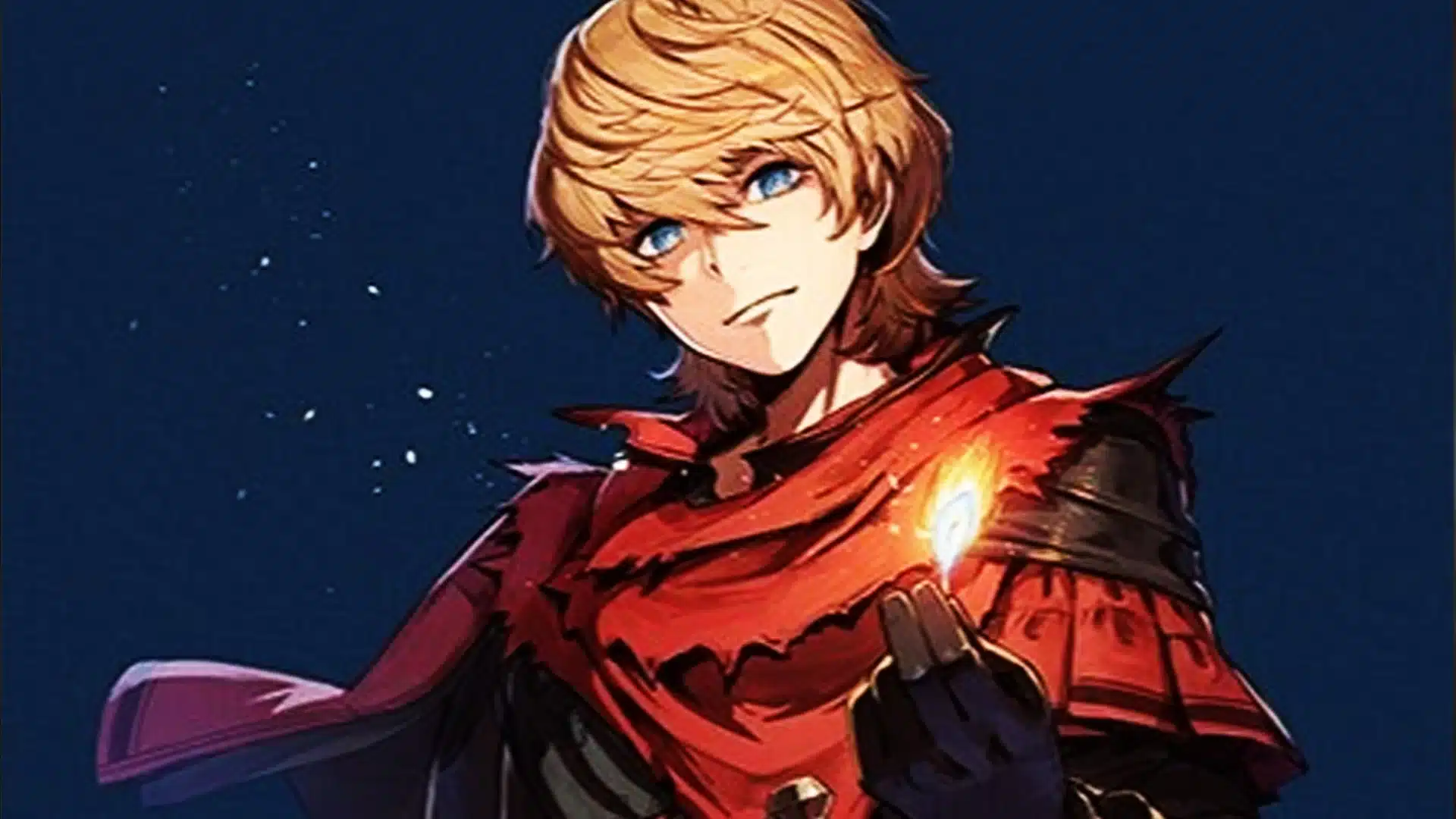Now that the Final Fantasy prerelease weekend has finally come and gone, players have access to the set’s new cards for themselves. Predictions can finally be put to the test, and while some cards may perform worse than expected, others could pleasantly surprise you.
After playing Final Fantasy Limited, constructed, and Commander all weekend, several cards seriously impressed us that we had looked over in spoiler season. These are the most underrated MTG cards from Final Fantasy.
Joshua, Phoenix’s Dominant
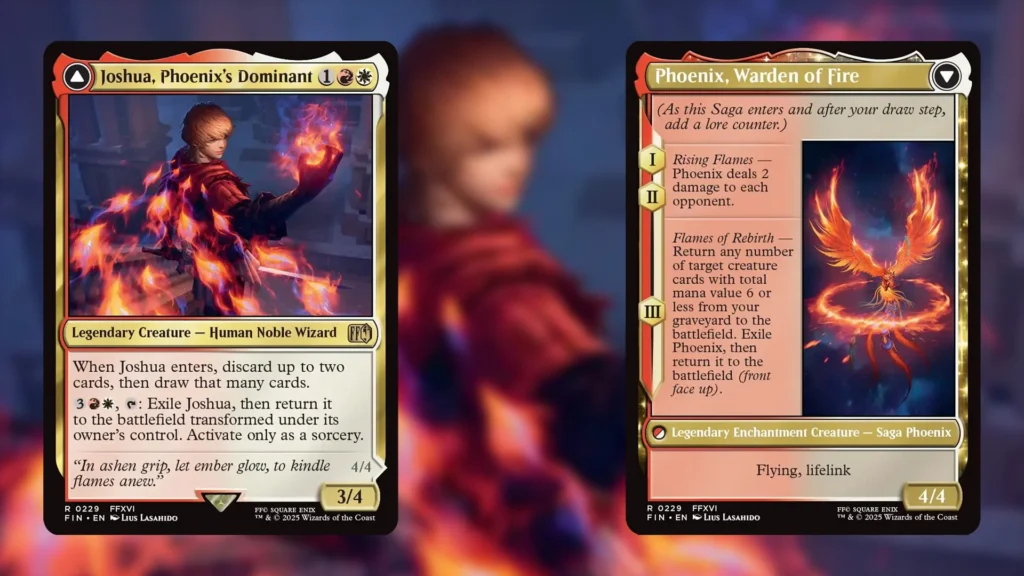
We didn’t have Joshua, Phoenix’s Dominant on our Best Constructed Final Fantasy cards list, but there’s a chance it should be on there. After playing with Joshua this weekend, it’s clear that this Final Fantasy card is certainly a constructed contender and can see Commander play thanks to its massive upside in longer games.
A 3/4 body for three mana that offers hand fixing, a lot of the time, will be strong enough in focused strategies, especially ones that care about the graveyard. Joshua fits like a glove in Jeskai Oculus for this reason, playing a similar role to Tersa Lightshatter. While Tersa is more of an aggressive threat, Joshua’s better stats can give him the edge in some cases.
Beyond just having a better body, Joshua’s transform effect makes them a fantastic option in Commander. By offering a massive reanimation effect and another round of hand fixing, this final chapter is a serious force to be reckoned with. This ability would definitely put in a lot of work in Jeskai Oculus decks, reanimating Abhorrent Oculus.
The one downside is that you need to spend five mana to flip Joshua, Phoenix’s Dominant in the first place. This is a lot for a format like Standard, especially since removal can easily blow him up. Should you manage to get him to stick around, however, Joshua can definitely put in serious work and is a real force to be reckoned with.
General Leo Cristophe
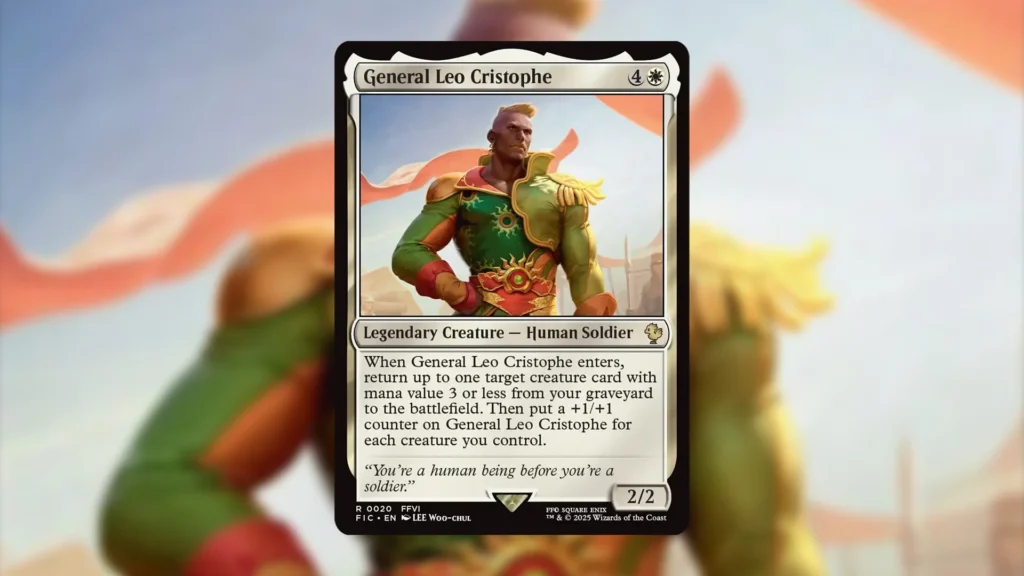
General Leo Cristophe was incredibly impressive when playing games of Commander with Revival Trance. Cristophe can be resurrected by a wide variety of mana-efficient reanimation effects and brings another body alongside it. Thanks to his last ability, General Leo Cristophe also ends up becoming a relevant threat. Interestingly, however, General Leo Cristophe’s best home isn’t a reanimator deck.
If you want to make the most of General Leo Cristophe, consider his role in a Blink deck. Imagine playing Cristophe, bringing back Flickerwisp, and Blinking Cristophe to bring back another creature. Combine this strategy with Soulherder, and you’ll reanimate something on each of your endsteps. Most of these effects in newer constructed formats, like Yathan Roadwatcher, have casting restrictions for a reason. General Leo Cristophe, in comparison, gets to go wild.
As if that wasn’t enough, go-wide token decks will likely welcome Cristophe with open arms. Since those decks mostly want to play on curve, Cristophe doubles as a recursive spell and a threat. Doubling Season, a very common enabler in these archetypes, can even double the counters on Cristophe while creating larger boards for him to maximize his value.
Airship Crash
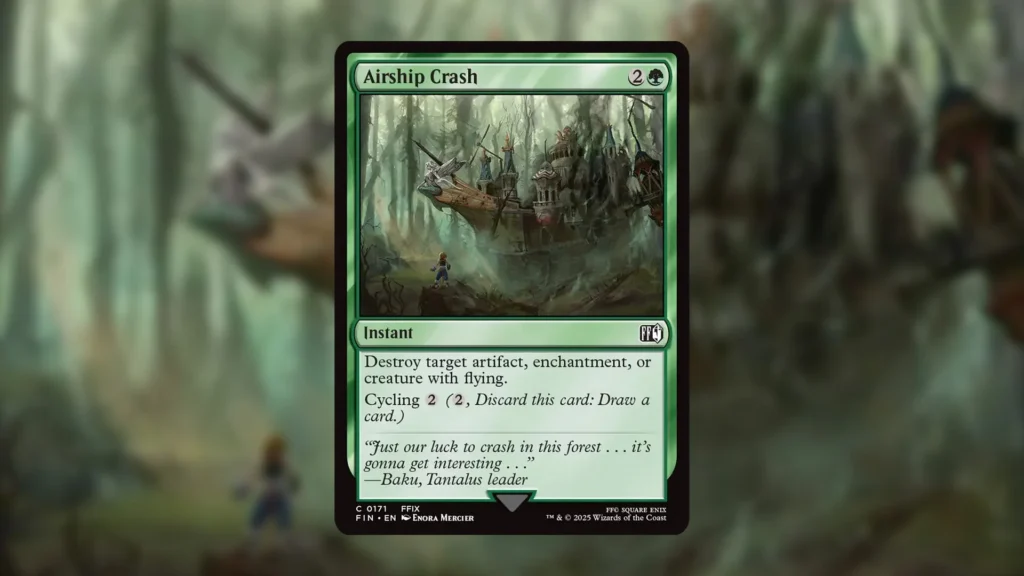
Effects like these can be a bit difficult to assess early on, thanks to only destroying a set number of things. Airship Crash, in our experience, was a pretty reliable card during prerelease. This card was so reliable, in fact, that you can reliably main deck a copy, which is rare for removal like this.
Thanks to the presence of equipment, you’ll generally have something to target with Airship Crash. The card also deals with Saga creatures, and a lot of problematic standalone threats like Chocobo Racetrack that are otherwise difficult to remove. If that weren’t enough, Airship Crash can also remove a lot of bombs that transform, since they almost exclusively turn into Saga creatures.
In Draft, multiple archetypes use various card types that Airship Crash can remove. Due to this, it’s very much worth keeping an eye out for during the Draft itself.
Locke, Treasure Hunter
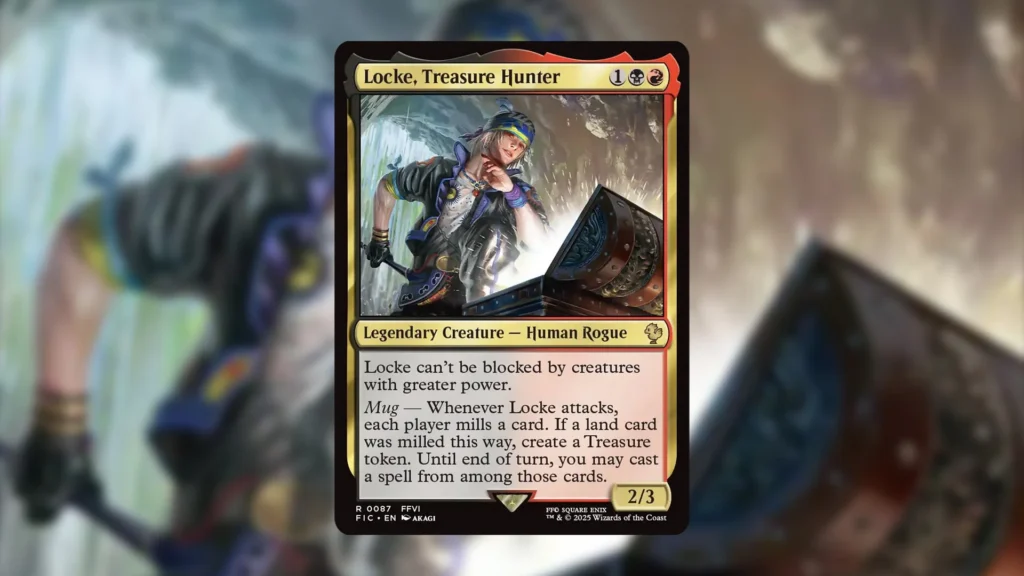
Locke, Treasure Hunter was a rather impressive creature for just three mana. Thanks to his evasion, connecting with Locke is generally pretty easy. Past that point, Locke commonly makes a Treasure token and can cast something. Between offering ramp and card advantage, mostly in the form of your opponent’s stuff, Locke does a lot more than it seems. Any card that offers both ramp and card advantage is typically a Commander staple in disguise.
Thanks to reading rather mediocre, there’s a good chance that you’ll get a few triggers off before your opponents realize that they probably need to remove it. At worst, Locke ends up trading with a removal spell, but unlike constructed, exponential value is better than immediate value, which makes Locke a lot more attractive.
Locke can do even more work in focused strategies. Using Locke in a Treasure Token deck, a graveyard matters deck, an Outlaws deck, or a deck that cares about casting your opponent’s spells all offer ways to maximize the value you get out of this creature. Locke is decent even when you aren’t synergizing with it, but it gets a lot better when you plan for it.

